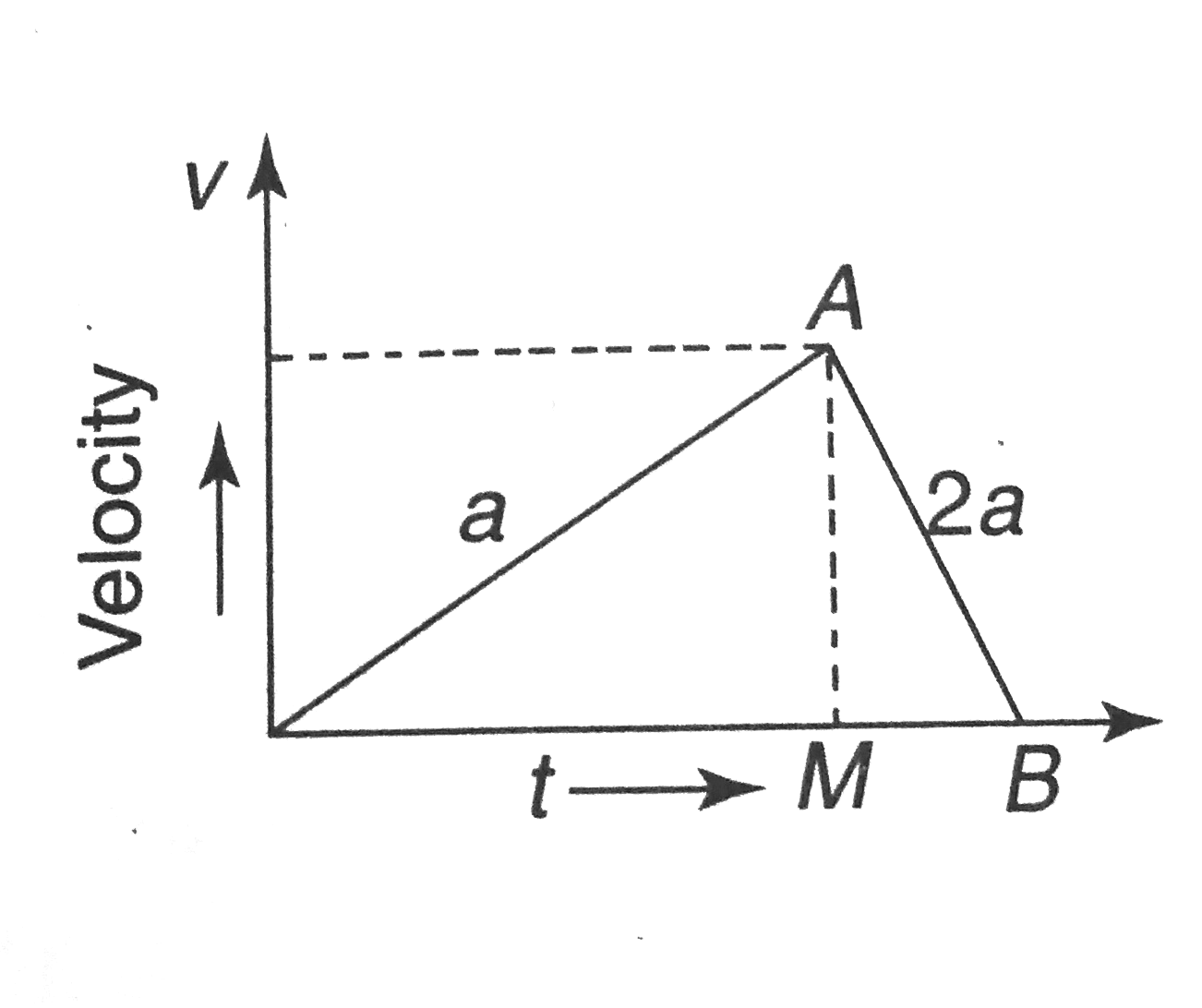A lift performs the first part of ascent with uniform acceleration a and the remainder with uniform retardation 2a. The lift starts from rest and finally comes to rest. If t is the time of ascent. Find the height ascended by lift.
at24
at23
at22
at28
The correct Answer is:B
Let OAB be the velocity-time graph of the lift. Time ordinate at A (i.e., AM) represents maximum velocity.
Total distance travelled
=area of the ΔOAB=12×OB×AM
AM=v,OM=t1,t1+t2=OB=t,MB=t2
∴ΔOAB=12×tv=h
or vt=2h ....(i)
Now vt1=a or t1=va...(ii)
and vt2=2a or t2=v2a ...(iii)
Adding (ii) and (iii)
t=t1+t2=va+v2a=3v2a=32a×2ht
or at2=3h⇒h=at23.

Topper's Solved these Questions
- GENERAL KINEMATICS AND MOTION IN ONE DIMENSIONBook:A2ZChapter:GENERAL KINEMATICS AND MOTION IN ONE DIMENSIONExercise:AIIMS Questions
Explore 20 Videos
- FLUID MECHANICSBook:A2ZChapter:FLUID MECHANICSExercise:Chapter Test
Explore 29 Videos
- GRAVITATIONBook:A2ZChapter:GRAVITATIONExercise:Chapter Test
Explore 29 Videos
Similar Questions
A car starts from rest and moves with uniform acceleration for time t then it moves with uniform speed of 60 km/h for time 3t and comes to rest. Find the average speed of car in its total journey.
View SolutionA body starts from rest and travels a distance x with uniform acceleration, then it travels a distance 2x with uniform speed, finally it travels a distance 3x with uniform retardation and comes to rest. If the complete motion of the particle is along a straight line, then the ratio of its average velocity to maximum velocity is
View Solution
Knowledge Check
A lift performs the first part of its ascent with uniform acceleration a and the remaining with uniform retardation 2a. If t is the time of ascent, find the depth of the shaft.
Aat24Bat23Cat22Dat28A particle start from rest, with uniform acceleration at time t, choose the correct option
A_2019_CBT2_E01_016_O01.png) B
B_2019_CBT2_E01_016_O02.png) C
C_2019_CBT2_E01_016_O03.png) D
D_2019_CBT2_E01_016_O04.png)
A body starts from rest and then moves with uniform acceleration. Then.
AIts displacement is directly proportional to square of timeBIts displacement is inversely proportion to the square of the time.CIt may move along a circle.DIt always moves in a straight line.
A partical starts from rest and moves in a straight line. It travels a distance L with uniform acceleration and then moves with constant velocity a further distance 2L. Finally, it comes to rest after moving a further distance 4L under uniform retardation. Find the ratio of average speed to the maximum speed.
View SolutionA body starts from rest & moves with constant acceleration a1 for time t1 then it retards uniformly with a2, in time t2 and finally comes at rest. Find t1t2
View SolutionA body starting from rest and moving with uniform acceleration will have
View SolutionA body moves for a total of nine second starting from rest with uniform acceleration and then with uniform retardation, which is twice the value of acceleration and then stop. The duration of uniform acceleration is
View SolutionA particle starts from rest and travels a distance s with uniform acceleration, then it travels a distance 2s with uniform speed finally it travels a distance 3s with uniform retardation and comes to rest. If the complete motion of the particle is a straight line then the ratio of its average velocity to maximum velocity is:
View Solution